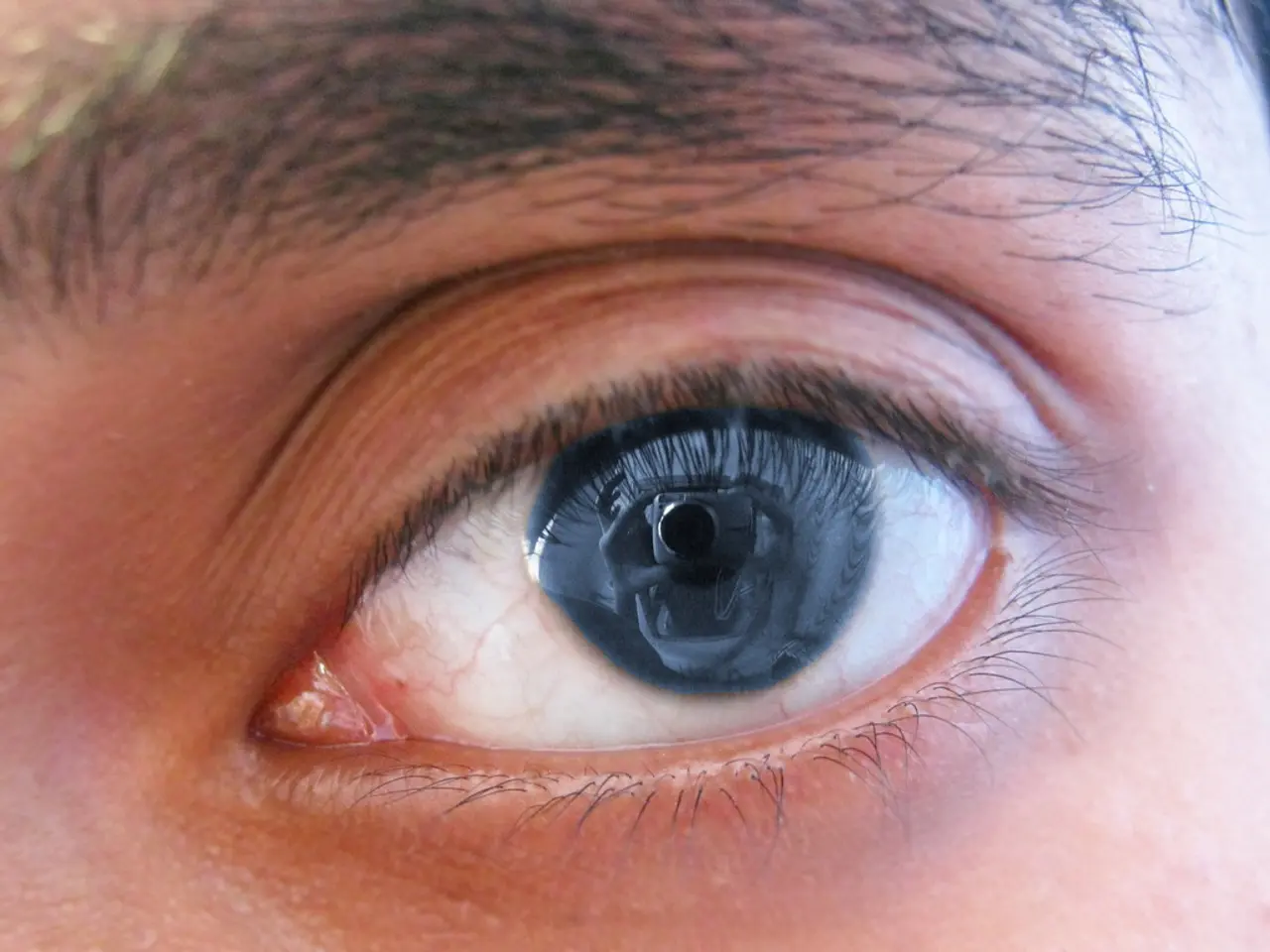Treatment options for Bell's palsy eye issues: A comprehensive review
In the realm of health conditions, Bell's palsy is a common neurological disorder that affects the facial nerve, leading to temporary paralysis of facial muscles. This article aims to shed light on the key treatments and preventive measures for eye complications associated with Bell's palsy.
Symptoms of Bell's palsy typically begin to manifest over 48-72 hours and usually improve within a few weeks. However, it's important to note that about 20% of people with Bell's palsy do not recover nerve function, and their symptoms do not improve or resolve [1].
Eye complications, such as dryness, infection, and corneal damage, can occur due to incomplete eye closure (lagophthalmos) [2]. To mitigate these risks, frequent use of artificial tears, preservative-free lubricating eye drops, and thicker ointments or gels is the mainstay treatment. These are used to keep the eye moist, especially at night, to prevent dry eye, corneal ulcers, and infections [1][2].
Protective eyewear, such as eye shades or moisture chambers, is another crucial element in managing eye complications. They protect the eye from irritation, dust, and injuries when blinking is impaired by facial nerve weakness [1][5].
In severe cases where eye closure cannot be restored soon enough, a surgical procedure called tarsorrhaphy may be considered. This involves partially sewing the eyelids together to protect the cornea, reducing exposure and ulcer risks [1].
Early corticosteroid treatment, used within 72 hours of onset, also plays a significant role in managing Bell's palsy. Corticosteroids help reduce nerve inflammation and preserve eyelid function, indirectly preventing eye complications [1][3].
Regular ophthalmic follow-up is essential for monitoring, proper management of eye drops, and recognising complications promptly to adjust treatment if needed [4]. For comprehensive information, consult resources on Bell’s palsy management and specialized ophthalmic nursing materials that cover ocular surface protection and interventions like tarsorrhaphy [1][4].
In addition to these measures, gentle facial exercises can help stimulate the affected muscles. Examples include lifting the eyebrow and gently closing the eyelid, stroking the affected side of the face in an upward motion, and performing facial expressions like a smile [6]. However, it's crucial to speak with a doctor before performing these exercises.
Preventive measures also extend to daily hygiene practices. A person should wash their hands thoroughly before applying eye drops, ointment, or gel, and when securing a patch or tape over the eye. When bathing or showering, wearing goggles or a face shield can help avoid getting water or bath or shower products in the open eye [7].
It's essential to seek medical advice if experiencing symptoms of severe dryness, damage to the eye, or infection, such as pain, irritation, blurred vision, redness, discharge, feeling as if something is in the eye, sensitivity to light, or swelling [8].
In conclusion, managing eye complications in Bell's palsy involves a combination of early drug therapy, diligent eye lubrication with drops/ointments, protective eyewear, and potentially surgical measures like tarsorrhaphy. Early intervention and collaboration with neurologists, ophthalmologists, or ENT specialists ensure optimal outcomes.
References:
[1] American Academy of Ophthalmology. (2020). Bell's Palsy. https://www.aao.org/eye-health/diseases/bells-palsy-overview
[2] National Institute of Neurological Disorders and Stroke. (2020). Bell's Palsy Fact Sheet. https://www.ninds.nih.gov/Disorders/Patient-Caregiver-Education/Fact-Sheets/Bells-Palsy-Fact-Sheet
[3] Mayo Clinic. (2020). Bell's palsy. https://www.mayoclinic.org/diseases-conditions/bells-palsy/diagnosis-treatment/drc-20371750
[4] American Academy of Neurology. (2016). Evidence-Based Guideline Update: Diagnosis and Initial Management of Bell's Palsy. https://www.aan.com/guidelines/practice-parameters/evidence-based-guidelines/diagnosis-and-initial-management-of-bells-palsy
[5] American Academy of Ophthalmology. (2017). Bell's Palsy: Prevention and Treatment of Ocular Complications. https://www.aao.org/eye-health/diseases/bells-palsy-prevention-and-treatment-of-ocular-complications
[6] American Academy of Otolaryngology—Head and Neck Surgery Foundation. (2019). Bell's Palsy: Patient Education Brochure. https://www.entnet.org/content/bell%E2%80%99s-palsy-patient-education-brochure
[7] American Academy of Ophthalmology. (2020). Bell's Palsy: Prevention and Treatment of Ocular Complications. https://www.aao.org/eye-health/diseases/bells-palsy-prevention-and-treatment-of-ocular-complications
[8] Mayo Clinic. (2020). Bell's palsy. https://www.mayoclinic.org/diseases-conditions/bells-palsy/symptoms-causes/syc-20371750




